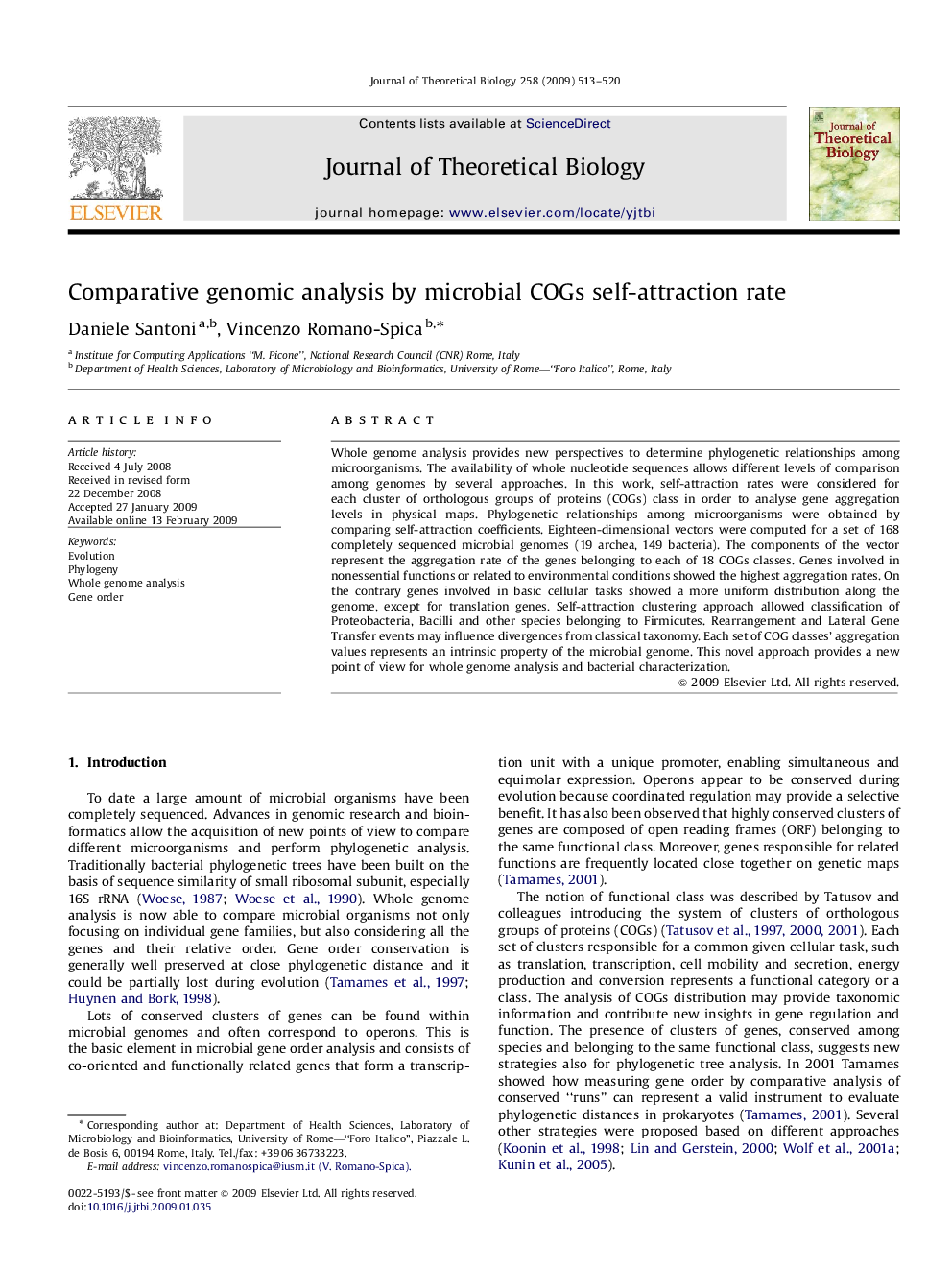| Article ID | Journal | Published Year | Pages | File Type |
|---|---|---|---|---|
| 4498053 | Journal of Theoretical Biology | 2009 | 8 Pages |
Abstract
Whole genome analysis provides new perspectives to determine phylogenetic relationships among microorganisms. The availability of whole nucleotide sequences allows different levels of comparison among genomes by several approaches. In this work, self-attraction rates were considered for each cluster of orthologous groups of proteins (COGs) class in order to analyse gene aggregation levels in physical maps. Phylogenetic relationships among microorganisms were obtained by comparing self-attraction coefficients. Eighteen-dimensional vectors were computed for a set of 168 completely sequenced microbial genomes (19 archea, 149 bacteria). The components of the vector represent the aggregation rate of the genes belonging to each of 18 COGs classes. Genes involved in nonessential functions or related to environmental conditions showed the highest aggregation rates. On the contrary genes involved in basic cellular tasks showed a more uniform distribution along the genome, except for translation genes. Self-attraction clustering approach allowed classification of Proteobacteria, Bacilli and other species belonging to Firmicutes. Rearrangement and Lateral Gene Transfer events may influence divergences from classical taxonomy. Each set of COG classes' aggregation values represents an intrinsic property of the microbial genome. This novel approach provides a new point of view for whole genome analysis and bacterial characterization.
Related Topics
Life Sciences
Agricultural and Biological Sciences
Agricultural and Biological Sciences (General)
Authors
Daniele Santoni, Vincenzo Romano-Spica,
